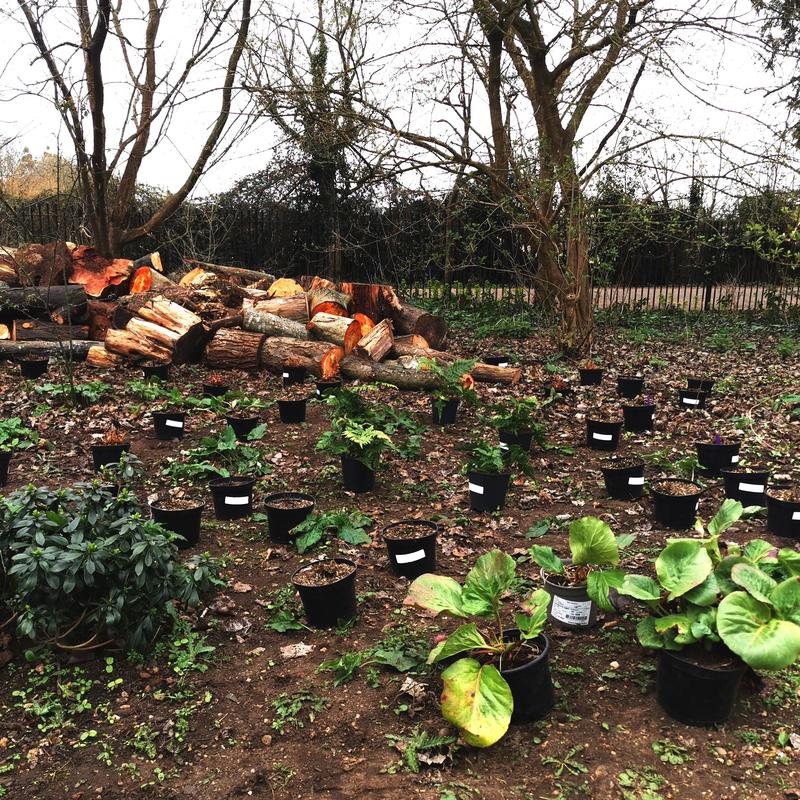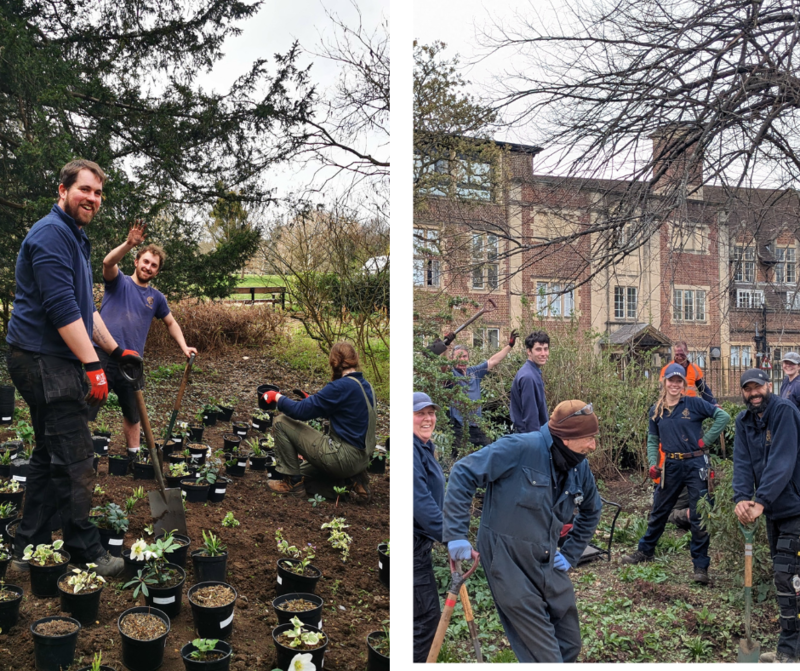From the Superintendent's desk: Spring 2025 News
Replanting the Parks borders
It took two years to renovate the borders in the University Parks after the Covid pandemic lockdowns. While we still have a way to go with dealing with the weeds, we have cut back and reshaped overgrown shrubs and exposed others that had been smothered by more vigorous neighbours. It has become evident that some plants cannot be restored and should be replaced. Between these and those we lost altogether, the borders and shrubberies require extensive replanting. This is an ongoing programme, and it is likely to take three to four years to complete.
We have made a start in the following areas:
The border between the Parks Road boundary and West Walk requires gapping up, which is the term that gardeners use for filling in bare patches. We have taken the opportunity to diversify the planting, adding more flowering herbaceous perennials and shrubs. Some of this planting will be kept low, so that people outside the Parks can glimpse distant vistas before taller trees and bushes close off the view again.
In the south east of the park, at Cox’s Corner, the winter border has undergone some significant change. We have removed some of the common vigorous shrubs that were crowding out other plants and blocking views and planted some more unusual species, including Camellia sasanqua, the beautiful decorative willow Salix ‘Mount Aso’ and Edgeworthia chrysantha, the Oriental paperbush. We have also included a variegated holly, Ilex aquifolium ‘Argentea Marginata’, three Chinese cornus, (Cornus kousa ‘Great Star’), three Japanese rowans (Sorbus commixta), three Cercidiphyllum japonicum katsura trees and six witch hazels (Hamamelis). The collection of shrubby cornus has been extended with different varieties, and we have created a new early spring herbaceous garden as a marbled carpet with seven different types of plants, including three different varieties of Brunnera.


Teams working at West Walk and Cox’s Corner
On the other side of the path at Cox’s Corner, adjacent to the cycle track, we have created a feature log pile for its habitat opportunities, and are experimenting with creating a fernery. We planted 60 ferns last week, and will augment the collection if it is successful.
At South Lodge, the entrance border has been gapped up with plants chosen from the planting scheme at the new Life and Mind Building just across the road. The reason for this is to suggest a sense of landscape continuity for staff, students and visitors as they move between the sites. The new pedestrian path to the rear of the Hayrick Border has also been planted, in this case with woodland understorey plants, including hellebores, foxgloves and epimediums. The main border also needs refreshing, but this is a project for the autumn.
We have been preparing these sites for planting since the beginning of the year, but on 27 March we made a big push on getting around 1,800 plants into the ground as all 40 members of the Parks team, including managers and office staff, worked together to get it done.
Other jobs on the day included clearing bramble and elder from under some of the large specimen trees and coppicing the hazel in the Parks. The wands harvested are used as supports and protective fencing in the borders.

Apprentices coppicing under instruction
The twice-yearly work parties are important both for getting significant tasks done and for team building, and one of the highlights of the day was a BBQ lunch together at the cricket pavilion, where we were joined by colleagues in the Sports team.
MBA students visit the Parks
The University Parks are a living laboratory for teaching and research projects. About a year ago, I told you about an investigation into the ecology of mistletoe by a D.Phil student in the Department of Biology.
Recently, we were delighted to welcome to the Parks MBA students from the Said Business School. This is the report on the visit, written for us by Dr Bettina Wittneben:
"In early March 2025 when the weather was dry but cold, and the buds were swelling on the trees, a group of MBA (Masters of Business Administration) students, from the Said Business School at Oxford University, stepped into the University Parks to explore the concept of the Circular Economy. This is the idea that our use of resources from the natural world could be reduced if we can keep the materials we use in circulation, rather than viewing them as “wastes”. They were asking the question - what could nature teach us about a "regenerative" approach, and what is the intersection between the natural world and the business world?
About 60 students in total explored these ideas using the Parks, the meadows on the other side of the river, and the Oxford University Museum of Natural History as inspiration. Being outside in a beautiful setting allowed ideas and conversations to flow freely, and the students really appreciated the opportunity. Laurence Cranmer, Associate Fellow at the Business School accompanied the students, and commented:
"The session in the University Parks provided an opportunity for the MBA students to think about, and reflect on, themes underlying the idea of a circular economy. I think that being outside in the Parks had two benefits.
First, the change of rhythm and pace provided an opportunity to think and discuss ideas in a different context. It is interesting that this reflects the experience of having a conversation with friends while walking in the Parks. This complements the teaching, learning, and discussion in classrooms and libraries.
Second, the Parks provide an immediate reference point for some of the themes discussed in the programme. Kim was able to stop at different points to raise issues and ask questions. For example, by digging up (with permission), handling, and smelling the soil started a discussion about complex natural systems."
The event was organised by Dr Bettina Wittneben at the Business School, and co-led by Dr Kim Polgreen, who works with the Leverhulme Centre for Nature Recovery.
Dr Bettina Wittneben is Departmental Lecturer in Management at Saïd Business School, Associate Fellow of Pembroke College, and Associate Fellow of the School of Geography and the Environment, University of Oxford
Dr Kim Polgreen is a Sustainability Educator at Oxford Earth Academy and Honorary Norham Fellow at the Oxford University Department of Education
Share this
More news
Related links
- Insert some related links here
- or leave this WYSIWYG empty
- if you wish


